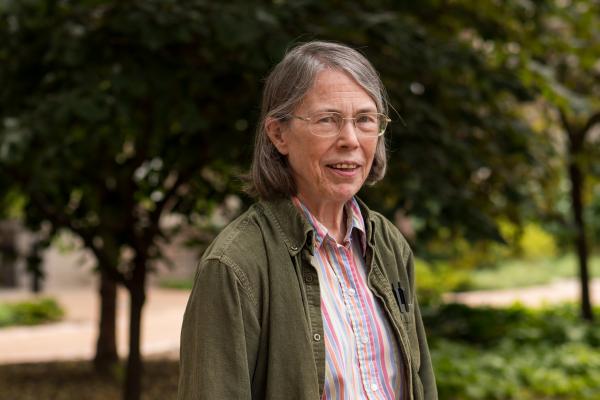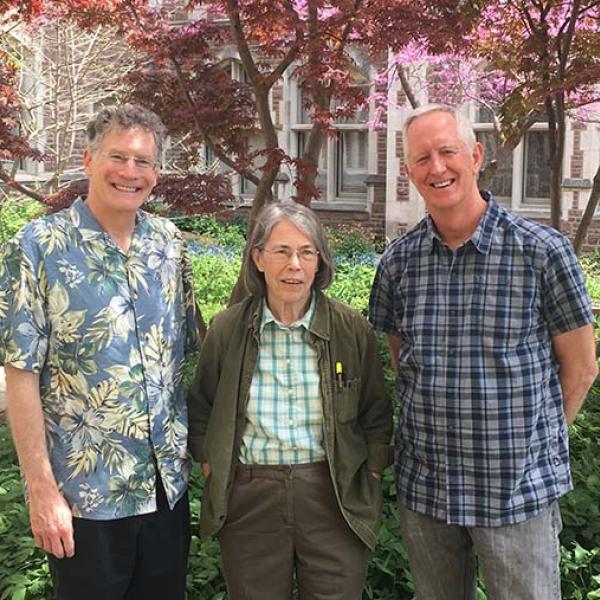Professor Elgin is interested in the role that chromatin structure plays in gene regulation. Her laboratory works with Drosophila melanogaster, combining biochemical, genetic and cytological approaches.
The Elgin Lab is interested in the role that chromatin structure plays in gene regulation, both effects from packaging large domains and local effects of the nucleosome array. Working with Drosophila melanogaster, we have used a transposable Pelement containing a copy of the white gene, a visible marker for gene silencing, and a copy of hsp26, a well-characterized inducible gene, to examine the effect of insertion into different chromosomal domains. While these genes are fully active in euchromatic domains, silencing (similar to Position Effect Variegation) is observed on insertion into pericentric heterochromatin, telomeres, and sites within the small fourth chromosome. Both changes in the local nucleosome array, and the spatial organization of the nucleus, appear critical in determining gene silencing. The fourth chromosome, which appears entirely heterochromatic by many criteria, but has ~80 genes, is the focus of our studies. Mapping experiments indicate that heterochromatin formation can be targeted by the presence of a repetitious element, 1360, and perhaps by other similar elements. Genetic analysis has shown that heterochromatic silencing is dependent on the RNAi machinery.
Work is ongoing to determine the mechanism of heterochromatin targeting, and to analyze the role of critical heterochromatin-associated proteins, including HP1 and HP2. The silencing that occurs at tandem repeats is of particular interest, with investigations of a GAA310 repeat and a lacO256 repeat array under current investigation.






